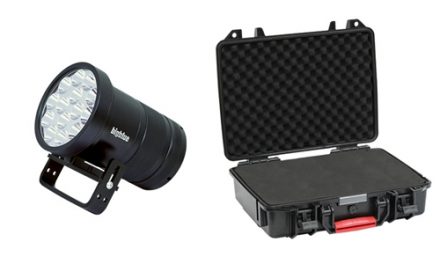Primary dive lights act as a diver’s main source of light. There are an assortment of primary dive lights on the market, which can make making a good choice a hard task. However, because the primary light is so important, divers need to know how to compare primary dive lights so they can make the best purchase decision.
An ideal primary light should have a perfect balance between power output, ergonomics, beam angle, functionality, battery capacity, size, and switch function.
Here is a guideline on how to compare primary diving lights.
Lumens output
Lumen output describes the brightness of a primary dive light. Typical primary dive lights have a lumen output ranging from 100 up to 25,000 lumens, but brighter isn’t always better. Consider your diving preferences and where you plan to dive to choose the right brightness level – a 2000 lumen dive light could cause whiteouts during a shallow day dive, but might be perfect for night diving in clear water. Because the primary light is your main source of light, make sure that it will be bright enough to provide visibility on its own, without the use of any additional lights.
Beam angle
Various primary dive lights employ different mechanisms to spread the beam of light underwater. Some lights utilize translucent diffusers to maximize the dispersion of the beam. Newer LED dive lights produce a soft and wide beam angle. Depending on the intended use, it’s a good idea for one to choose a dive light with a wide flood and one that does not have hot spots. Cave divers, however, should look for narrow-beam dive lights. Primary dive light manufacturers usually indicate whether a light is a spot or a flood, and how many degrees of coverage the device will deliver.
Functionality
Some primary dive lights have multi-function capabilities whereby one dive light can perform multiple roles. There are also ones that can be dimmed and used for technical diving while others feature a focusable lens that narrows a beam to a more suitable angle of coverage for cave and wreck diving. Your primary light should be able to do as much as possible, so choose a light with the features you need at a price you can afford.
Size and weight
The size of the light head and battery canister should be appropriate. However, a small and compact dive light does not necessarily mean small output. Because you will be using your primary light continuously throughout your dive, keep comfort and weight in mind when testing out different options.
High quality primary dive lights can greatly enhance one’s diving experience and guarantee safety. Some of the best primary dive lights to check out include:
(i)UK’s SL3 eLED
(ii)UK’s Mini Q40
(iii) UK’s Light Cannon
(iv) UK’s Aqualite Pro Video Light





